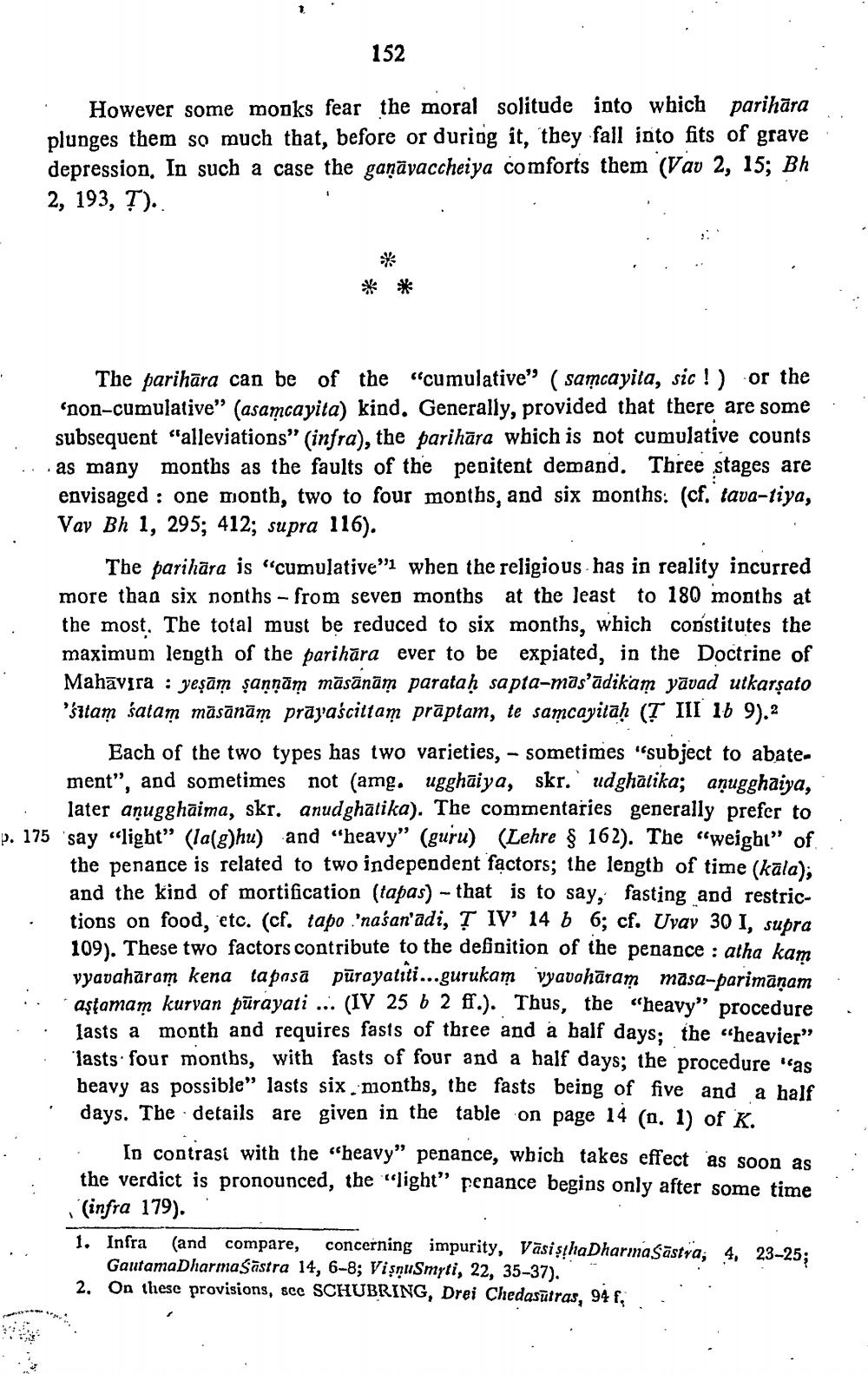________________
152
. However some monks fear the moral solitude into which parihāra plunges them so much that, before or during it, they fall into fits of grave depression. In such a case the gaṇāvaccheiya comforts them (Vav 2, 15; Bh 2, 193, ?).
The parihāra can be of the “cumulative" ( samcayita, sic!) or the 'non-cumulative" (asamcayita) kind. Generally, provided that there are some subsequent "alleviations" (infra), the parihāra wbich is not cumulative counts as many months as the faults of the penitent demand. Three stages are envisaged: one month, two to four months, and six months: (cf. tava-riya, Vav Bh 1, 295; 412; supra 116).
The parihāra is "cumulative” when the religious - has in reality incurred more than six nonths - from seven months at the least to 180 months at the most. The total must be reduced to six months, which constitutes the maximum length of the parihāra ever to be expiated, in the Doctrine of Mahavira : yesām şannām māsānām paratah sapta-mas'ādikam yāvad utkarsato siłam śatam māsānām prāyaścittam prāptam, te samcayitaḥ (III 16 9).2
Each of the two types has two varieties, - sometimes "subject to abatement", and sometimes not (amg. ugghaiya, skr. udghalika; anugghaiya,
later anugghāima, skr. anudghātika). The commentaries generally prefer to p. 175 say "light" (la(g)hu) and “heavy” (guru) (Lehre $ 162). The "weight" of
the penance is related to two independent factors; the length of time (kala): and the kind of mortification (tapas) - that is to say, fasting and restrictions on food, etc. (cf. tapo 'našan'adi, Ţ IV 14 b 6; cf. Uvay 30 I, supra 109). These two factors contribute to the definition of the penance : atha kam vyavahāram kena tapasā pūrayatiti...gurukam vyavohāram masa-parimānam aştamam kurvan pürayati ... (IV 25 b 2 ff.). Thus, the “heavy" procedure lasts a month and requires fasts of three and a half days; the “heavier" "lasts four months, with fasts of four and a half days, the procedure “as
beavy as possible” lasts six months, the fasts being of five and a half ' days. The details are given in the table on page 14 (, 1) of K.
In contrast with the “heavy" penance, which takes effect as soon as the verdict is pronounced, the “light” penance begins only after some time (infra 179). 1. Infra (and compare, concerning impurity, Vāsistha Dharmaśāstřa; 4. 23-25;
GautamaDharma Sāstra 14, 6-8; VişnuSmyti, 22, 35-37). 2. On these provisions, sce SCHUBRING, Drei Chedasūtras, 94 fr .




